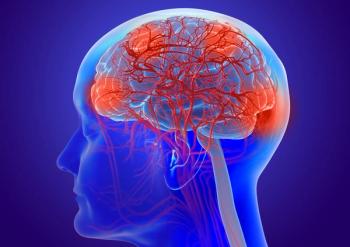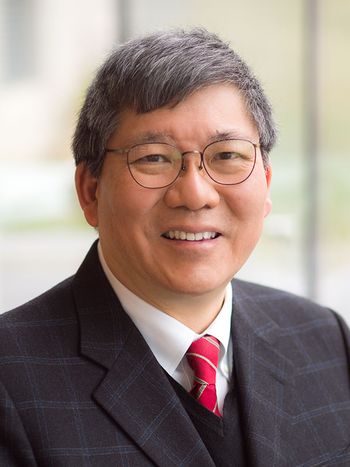
Oncology NEWS International
- Oncology NEWS International Vol 16 No 7
- Volume 16
- Issue 7
New Antiangiogenesis Agent Promising in Glioblastoma
The oral multitargeted tyrosine kinase inhibitor cediranib (Recentin, AstraZeneca), known experimentally as AZD2171, alleviated edema and showed an improvement in progression-free survival, compared with historical controls, in a phase II study of patients with recurrent glioblastoma
LOS ANGELESThe oral multitargeted tyrosine kinase inhibitor cediranib (Recentin, AstraZeneca), known experimentally as AZD2171, alleviated edema and showed an improvement in progression-free survival, compared with historical controls, in a phase II study of patients with recurrent glioblastoma reported at the 2007 American Association for Cancer Research annual meeting (abstract 2118). The trial was funded by the National Cancer Institute.
Cediranib, a pan-VEGF (vascular endothelial growth factor) receptor kinase inhibitor, targets the abnormal vasculature that is a hallmark of glioblastomas. "Glioblastoma is a highly vascularized tumor. It secretes high amounts of VEGF that allows it to form a network of blood vessels supplying the tumor. Targeting the vasculature, therefore, is an attractive therapeutic option for these patients, who generally survive less than 15 months," said Tracy Batchelor, MD, MPH, chief of neuro-oncology, Massachusetts General Hospital Cancer Center, Boston.
The 6-month study included 31 patients who had failed prior radiation, surgery, and chemotherapy and were treated with 45 mg/d of cediranib. A report on the first 16 patients in the study was recently published in Cancer Cell (11:6-8, 2007).
Cediranib reduced mean tumor volume by more than 50% in half the patients, compared with a 10% historical rate of response to conventional therapies. Median time to progression was 111 days vs a historical time of 63 days. Median overall survival was 211 days vs 175 for historical controls.
"AZD2171 had a direct and rapid effect on tumor vessels, as measured by serial MRI. The vessels, which are abnormal, large, and leaky, began to normalize," he said. "As a consequence of this normalization, brain edema was alleviated. We were able to reduce steroid doses and even eliminate them in some patients." Normalization of tumor vessels can also provide a window of opportunity for improved delivery of standard treatments.
Added senior author Rakesh Jain, PhD, Harvard Medical School, "This was beautiful. We were able to see changes within 24 hours of taking a single dose."
Dr. Batchelor's team is initiating further studies in recurrent glioblastoma and in newly diagnosed patients in combination with radiation and temozolomide (Temodar). They are also identifying agents that can be combined with cediranib to block the proteins bFGF and SDF1α, which are believed to be "potential pathways of escape from chemotherapy," he said (see box).
Potential Pathways of Escape From Anti-VEGF Therapy
Rakesh Jain, PhD, director of the Steele Laboratory in the Massachusetts General Hospital Department of Radiation Oncology, described how biomarker studies allowed investigators to track the activity of cediranib inside the tumor. They found that as expression of VEGF proteins decreased, the levels of two other proteins increased as the tumor switched to other survival pathways.
One of these proteins, basic fibroblast growth factor (bFGF), is believed to be involved in angiogenesis, but proangiogenic activity in the other, chemokine stromal-cell-derived factor 1 alpha (SDF1α), was a new discovery. Patients with elevations in bFGF and SDF1α demonstrated tumor growth on MRI.
Articles in this issue
over 18 years ago
Education Plan Promotes Use of Evidence-Based Practiceover 18 years ago
SearchMedica Oncology Debuts at ASCOover 18 years ago
New Small Molecule TKI Active in Thyroid Cancerover 18 years ago
NCI Rejects NSABP's P-4 Prevention Trialover 18 years ago
Trustee Warns That Medicare Is Heading for Insolvencyover 18 years ago
Experts Push for Trials of Statins to Prevent Prostate Caover 18 years ago
First-Line Dasatinib Effective in Chronic Phase CMLover 18 years ago
Vascular Disrupting Agent NPI-2358 in Phase I Studyover 18 years ago
Response to CMS Proposal on ESAsNewsletter
Stay up to date on recent advances in the multidisciplinary approach to cancer.





![According to John Henson, MD, “What we need are better treatments to control the [brain] tumor once it’s detected.”](https://cdn.sanity.io/images/0vv8moc6/cancernetwork/e0d29c38bb732429ae370e4ef7d1829a10c96446-2992x1684.png?w=350&fit=crop&auto=format)